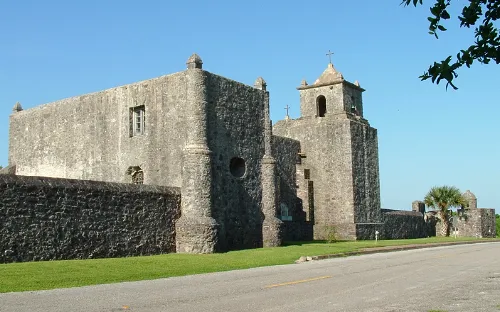Presidio La Bahia Museum and its collection
Presidio La Bahía, also known as El Presidio Nuestra Señora de Loreto de la Bahía, is a Spanish fort that was constructed in 1747. It is located in Goliad, Texas, United States. This historical site offers a glimpse into the past, showcasing the architectural style of the Spanish colonial period and providing a unique insight into the history of Texas.
Presidio La Bahía and the Texas Revolution
In 1836, Presidio La Bahía played a significant role in the history of Texas. Following the defeat of the Mexican army at San Jacinto, the fort was taken over by Texan independents. This event marked a pivotal moment in the Texas Revolution, making the fort a key site for understanding the state's path to independence.
History & Anthropology Historic house War




























